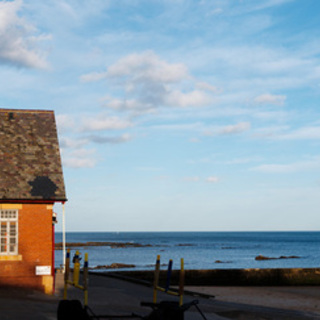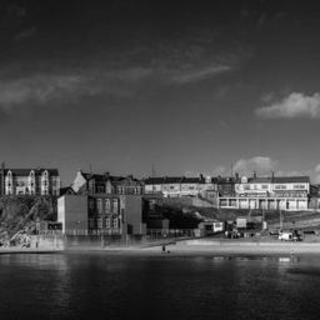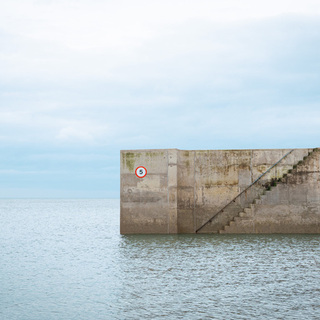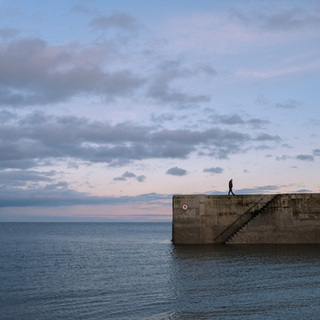Location scouting
Art inspiration: location scouting to reproduce a composition
An art print hanging on our wall inspired me to see how closely I could reproduce the composition in real life

Not long after moving up to the North East, my wife and I bought a small poster print from a local shop, Elsee, in Whitley Bay. It’s an illustration of Cullercoats Harbour in a modern take on the graphic style of old tourism posters and we have it hanging in our bedroom.
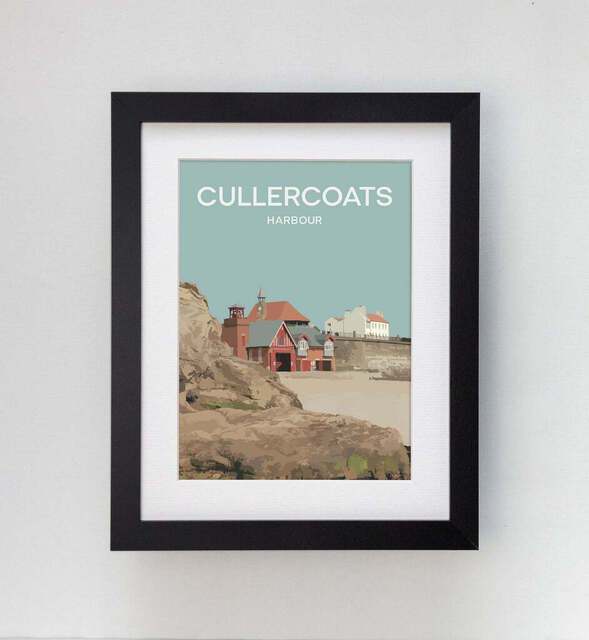
After a while I started to wonder how ‘real’ the composition was and, given that we visit Cullercoats Harbour regularly, I recently made it a mission to find out.
This is a little easier said than done—our visits are usually family affairs, with two young children doing their best to throw themselves in the sea—but after a quick initial scout a week earlier, last Sunday I managed to get a pretty close match on the composition that is also a pretty nice image in its own right.
In this page:
Location scouting
I’m perhaps stretching slightly the idea of scouting a location for this shot, given that it’s just down the road from where I live, but the specific composition of the print from Elsee is somewhat harder to nail down and is definitely requiring proper scouting within that small area of beach.
While it’s a generally very accurate rendering of the real location in Cullercoats Bay, artistic licence of course comes into play with the illustration. For example, in real life there’s another background building that appears between the roof line of the RNLI station and Cliff House (the white building) which has sensibly been left out of the picture for a cleaner artistic vision.
Thus, my starting question was whether the composition of the illustration actually exists in real life. So far it looks like it mostly does but, again, with some artistic licence applied to aid the overall composition.
Getting started
As I’ve been slowly(!) working on a location scouting app for the past couple of years, this was a great test case for the app and so the first thing I did was snap a photo of the print on our wall and add it to SceneMapper as a scene:

With this done, I had my reference photo easily accessible along with location info (not really needed in this case given its proximity) and the ability to set alerts based on weather conditions.
If I want to have a go at really recreating the original illustration in photographic form, I’m going to need some quite specific conditions: clear blue skies and a low tide before too many people get on the beach (i.e. early morning) and leave a load of footprints.
The last bit is probably going to prove impossible—there was a window as lockdown began to ease but not too many people were venturing out yet, now lost—but I visit so often that I’m open to catching some pretty close conditions one day.
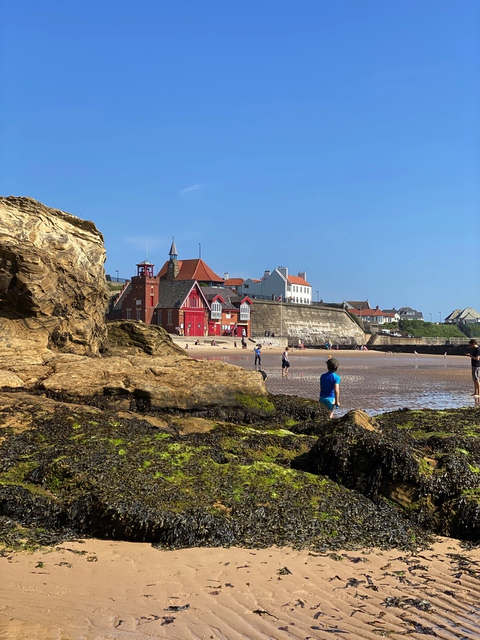
The first attempt
In the meantime, I needed to figure out if there’s a composition worth finding the right conditions for!
A few days after saving the scene in my app, I was down at Cullercoats Bay with my kids in the sunny weather. I managed one quick dash round the cliff to where I guessed the composition was based and took a photo with my iPhone 11 Pro, using the ‘2x’ lens (somewhere around a 50mm equivalent focal length).
This answered a couple of questions quite quickly. First: yes, it looks like the composition might be on from this spot
- First: yes, it looks like the composition might be on from roughly this spot. The rocks are close in shape, though there’s a square-ish block with a straight vertical face on the left that doesn’t match the illustration. For now, I’m guessing it’s artistic licence.
- Secondly: I need a longer lens to get the right crop.
All good scouting info, and ready for another try when I have some more time…
The second attempt
Another few days later, I was back on the beach at Cullercoats with the kids, and this time I’d brought the GFX 50S with the GF 100-200mm telephoto lens. It was also the weekend this time, so my wife was also with us and it was easier to slip away for a couple of minutes to try the shot.
This second framing attempt, and first attempt with a ‘proper’ camera, is actually pretty good I think. It has a lot of the core elements of the illustration and generally works quite well.
The square-ish rock on the left is unfortunate and that’s the main thing I need to work on compositionally. If I can find a view to sort that out, then it’s just down to getting some good conditions, in particular a clean beach.
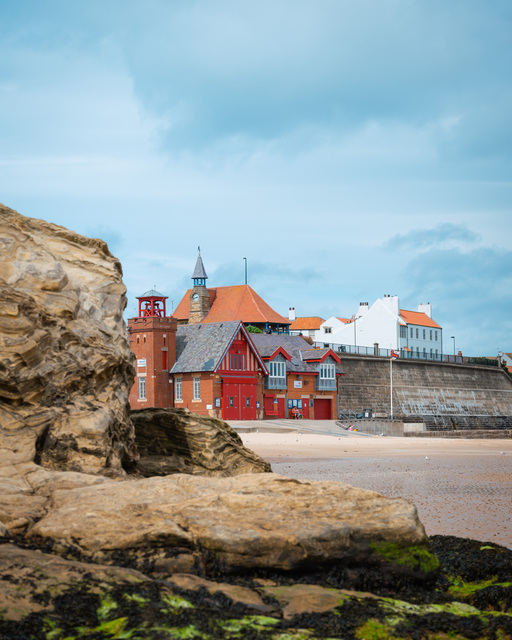
A bonus image
Having bagged the image above, on a wander further round the beach with my eldest I thought I might as well test the composition of another outcropping of rock from the cliff. It was never going to be a match to the illustration, but I rather like it.
Conditions had changed, so we had a darker sky and some nice light on the foreground which gives a much moodier feel. The tide pool in the foreground helps balance things a little too, though it would be nice to try again on a less windy day so the water was still.

The next attempt
Looking again more closely, I may actually be wrong on scouting point 2 from the first attempt: maybe I don’t need a longer lens, but to climb and get much closer in on the rocks. The shape of the rock may then work at that much closer angle of view: basically using way less of the rock to fill the same amount of the frame.
If this is indeed the composition, I’ll almost certainly need to focus stack or use a very narrow aperture to get depth of field coverage through the scene.
I may also be wrong, so what I really need is some time down in the bay on my own so I can properly scout around and find the best match, rather than snatching a few seconds here and there between looking after two small children.
